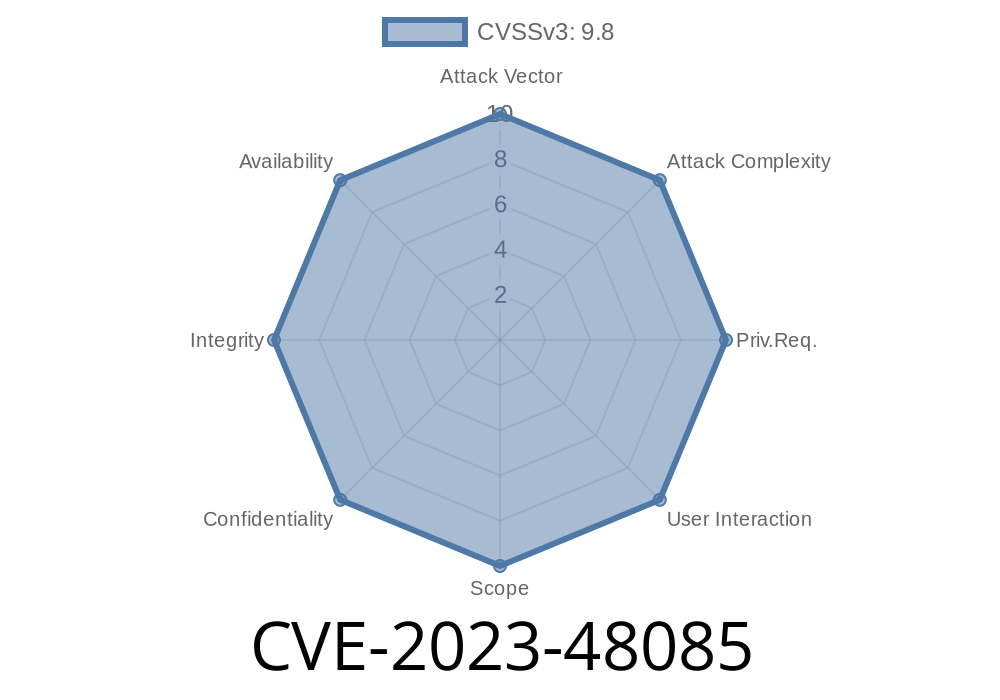Nagios XI, a popular network and server monitoring software, was found to be vulnerable to a Remote Code Execution (RCE) attack in versions prior to 5.11.3. The vulnerability allows an attacker to execute arbitrary commands on the targeted system through a vulnerable component called command_test.php. This post presents a comprehensive analysis of the CVE-2023-48085 vulnerability, the affected Nagios XI versions, a code snippet, and the steps to reproduce the exploit.
Vulnerability details
CVE ID: CVE-2023-48085
Affected software: Nagios XI
Affected versions: < 5.11.3
Exploit prerequisites: Authenticated access to the Nagios XI web interface
Impact: Remote Code Execution (RCE)
Remedy: Upgrade to Nagios XI version 5.11.3 or later
Original reference: Nagios official CVE announcement
Command_test.php and the problem
The affected versions of Nagios XI include a web component called command_test.php which is accessible via the web interface for logged-in users. This component was intended to enable users to submit and test new commands during the monitoring configuration process. However, due to insufficient input validation and output sanitization, an attacker with access to the web interface can exploit this component to execute arbitrary commands on the system.
Proof of Concept: Exploiting the remote code execution vulnerability
Navigate to the command_test.php component. You may need to access a URL similar to the following
https://<nagios_xi_server>/nagiosxi/includes/components/commandmanager/command_test.php
3. Using the form, craft a malicious command. In this example, I'm going to attempt to create a file named 'pwned.txt' in the '/tmp' directory as a proof of concept:
;&echo 'pwned' > /tmp/pwned.txt;#
Keep in mind that this is just a simple example. The actual payload could be far more malicious, potentially leading to full system compromise.
4. Submit the command through the web interface, and monitor the targeted server for the creation of the 'pwned.txt' file.
5. If the exploit is successful, the 'pwned.txt' file will be created on the targeted system in the '/tmp' directory.
$ ls /tmp/pwned.txt
/tmp/pwned.txt
Mitigation and prevention
To mitigate this vulnerability and protect your Nagios XI installation from potential remote code execution attacks, upgrade your software to version 5.11.3 or later. Always keep your software up-to-date and apply security patches promptly to minimize the risk of being exploited.
In addition to upgrading, organizations should follow the principle of least privilege and implement strong access controls to limit the number of authenticated users with access to the Nagios XI web interface.
Conclusion and final thoughts
CVE-2023-48085 serves as a reminder that even widely-used and well-established software products can have vulnerabilities. Regularly updating your software and following security best practices can help mitigate the risks posed by such vulnerabilities.
This article dissected the CVE-2023-48085 vulnerability, provided instructions on exploiting the vulnerability, and identified the best practices to mitigate it. By understanding the potential threats and vulnerabilities in your software ecosystem, you can better equip yourself with the knowledge required to keep your systems secure.
Timeline
Published on: 12/14/2023 07:15:09 UTC
Last modified on: 12/19/2023 18:41:59 UTC
